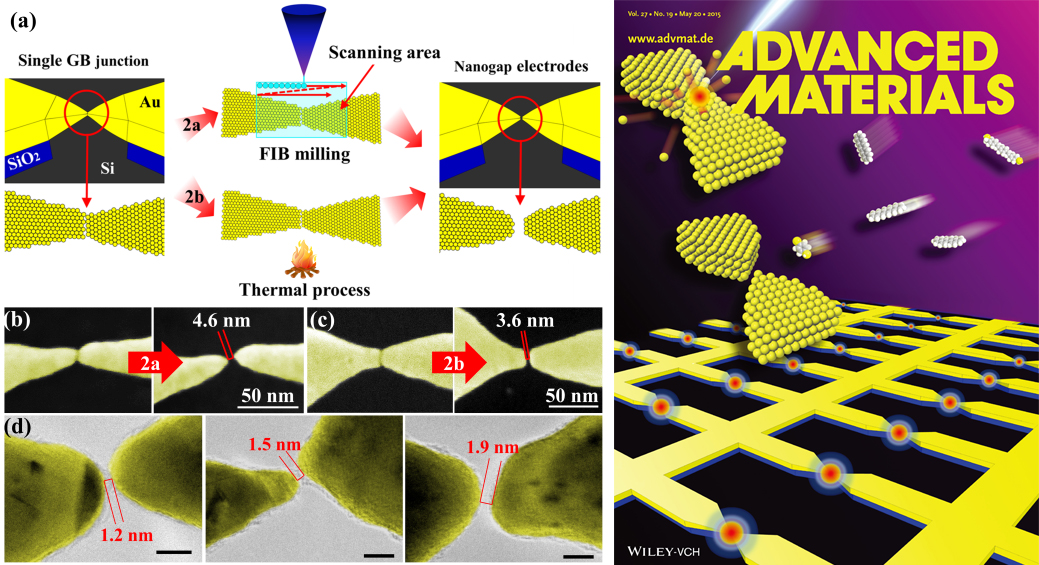2015.5.27
Miniaturization of electronic devices requires novel technologies to overcome the fundamental limitation of current complementary metal-oxide semiconductor (CMOS)-based technology. Building blocks based on single molecule/atom are highly expected as the ultimate limit of the minimization of electronic devices.
Scientists from the Beijing National Laboratory for Molecular Sciences Key Laboratory of Organic Solids, Institute of Chemistry and the LMF, IOP, have developed a dedicated approach to fabricate feasibly stable nanogap electrodes with gap width down to 1–2 nm based on the phenomenon that intergranular fracture takes place along grain boundaries (GBs) of a polycrystalline material, which should be usually avoided in bulk materials. Such approach is expected to address the challenge for molecular devices that the connection of molecules with macroscopic electronic circuits is still a bottleneck.

Image: The fabrication of nanogap electrodes through the break of singe GB junctions.
Original article: A.Cui et al (2015) “Single Grain Boundary Break Junction for Suspended Nanogap Electrodes with Gapwidth Down to 1–2 nm by Focused Ion Beam Milling” Adv. Mater. 2015, 27, 3002–3006.


